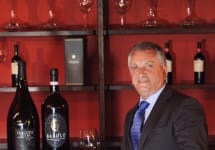Beni di Batasiolo Barolo Cerequio 2013
-
Wilfred
Wong



Product Details
Your Rating
Somm Note
Winemaker Notes
Deep garnet red colour with delicate orange tinges. With unmistakable and unique aromas, it has balsamic hints of vegetables, flowers and spices that make Barolo Cerequio immediately recognizable. Evokes memories of incense, wax, tobacco and coffee that magically blend with a delicately ethereal note. Palate of great persistence, full-bodied, elegant, harmonious and balanced.
Professional Ratings
-
Wilfred Wong of Wine.com
COMMENTARY: The 2013 Beni di Batasiolo Barolo Cerequio offers persistent richness from start to finish. TASTING NOTES: This wine shines with aromas and flavors of black fruits, earthy notes, enticing spices, and dried leaves. Try it with slow-cooked lamb shanks. (Tasted: November 11, 2022, San Francisco, CA)
Other Vintages
2015-
Wine
Enthusiast -
James
Suckling
-
James
Suckling -
Wine
Enthusiast
-
Robert
Parker
-
James
Suckling
-
Wine
Spectator


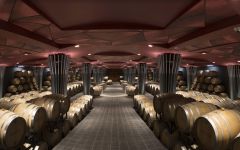
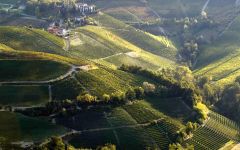
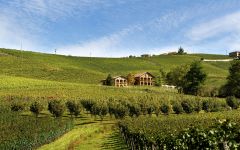
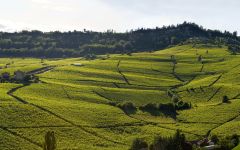
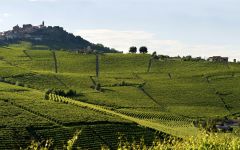
The farms are all located within the prized Barolo wine-growing area: Batasiolo, Morino, Cerequio and Brunate in La Morra; Boscareto and the historical Briccolina in Serralunga d’Alba; Bricco di Vergne and Zonchetta in Barolo; Tantesi and Bussia Bofani in Monforte d’Alba.
Deciding to give the property a new name, the Dogliani brothers took their inspiration from the vineyard where the estate headquarters are located. Thus it was that the new winery, set amidst the gentle contours of the Batasiolo vineyard, came to be called “Beni di Batasiolo”.
The real essence of “Beni di Batasiolo” cannot be understood without admiring the expanses of its vineyards in the finest and most important wine-growing villages of the Langhe. In the old local dialect the word “beni” means a property or estate, and it is this idea of the unbreakable bond existing between the farmer and his vineyard which is encapsulated in the name “Beni di Batasiolo”.
Batasiolo, the wine cellar which besides having all its vineyards in the heart of the Langhe, a land known above-all for its great reds, produces all the most celebrated wines grown in this region, including Barolo, Barbaresco, Barbera d’Alba Sovrana and Dolcetto d’Alba Bricco di Vergne, as well as great whites such as Moscato d’Asti Bosc dla Rei, Langhe Chardonnay Morino and Gavi del Comune di Gavi. This magnificent range is completed by the elegant Batasiolo Metodo Classico millésimé and the exclusive Moscato Passito Muscatel Tardì.
Barolo is the emblem of the cellar’s production, its real pièce de résistance, and Beni di Batasiolo is proud to present as many as four different Cru grown on the privileged hills of Barolo, Monforte, Serralunga and La Morra: Barolo Bussia Vigneto Bofani, Barolo Boscareto, Barolo Cerequio, Barolo Brunate, and the winner of many awards, Barolo Briccolina.

Responsible for some of the most elegant and age-worthy wines in the world, Nebbiolo, named for the ubiquitous autumnal fog (called nebbia in Italian), is the star variety of northern Italy’s Piedmont region. Grown throughout the area, as well as in the neighboring Valle d’Aosta and Valtellina, it reaches its highest potential in the Piedmontese villages of Barolo, Barbaresco and Roero. Outside of Italy, growers are still very much in the experimentation stage but some success has been achieved in parts of California. Somm Secret—If you’re new to Nebbiolo, start with a charming, wallet-friendly, early-drinking Langhe Nebbiolo or Nebbiolo d'Alba.

The center of the production of the world’s most exclusive and age-worthy red wines made from Nebbiolo, the Barolo wine region includes five core townships: La Morra, Monforte d’Alba, Serralunga d’Alba, Castiglione Falletto and the Barolo village itself, as well as a few outlying villages. The landscape of Barolo, characterized by prominent and castle-topped hills, is full of history and romance centered on the Nebbiolo grape. Its wines, with the signature “tar and roses” aromas, have a deceptively light garnet color but full presence on the palate and plenty of tannins and acidity. In a well-made Barolo wine, one can expect to find complexity and good evolution with notes of, for example, strawberry, cherry, plum, leather, truffle, anise, fresh and dried herbs, tobacco and violets.
There are two predominant soil types here, which distinguish Barolo from the lesser surrounding areas. Compact and fertile Tortonian sandy marls define the vineyards farthest west and at higher elevations. Typically the Barolo wines coming from this side, from La Morra and Barolo, can be approachable relatively early on in their evolution and represent the “feminine” side of Barolo, often closer in style to Barbaresco with elegant perfume and fresh fruit.
On the eastern side of the Barolo wine region, Helvetian soils of compressed sandstone and chalks are less fertile, producing wines with intense body, power and structured tannins. This more “masculine” style comes from Monforte d’Alba and Serralunga d’Alba. The township of Castiglione Falletto covers a spine with both soil types.
The best Barolo wines need 10-15 years before they are ready to drink, and can further age for several decades.
